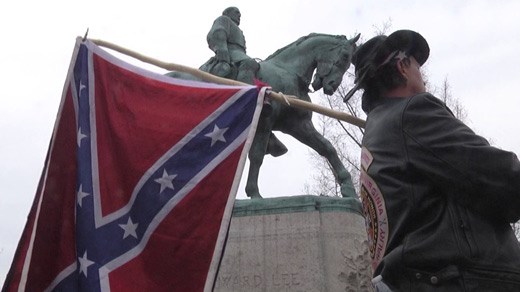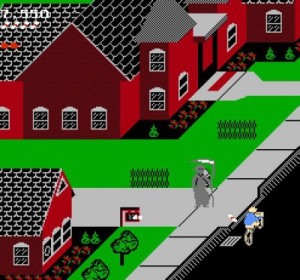
“There is no moral difference between the facts of life in Birmingham and the facts of life in San Francisco.” -James Baldwin, 1963
For progressive white people who live in liberal northern cities, there’s a persistent myth that racism is something that happens somewhere else and is perpetrated by other people. Racism doesn’t happen in San Francisco, California, it happens in Charlottesville, Virginia. Racism doesn’t come from well-meaning Democrats, it comes from hostile Republicans. It’s a false dichotomy, and it completely ignores the role of systemic racism in perpetuating inequality.
Is a Black person in Virginia more likely to have the N word yelled at them than one in Boston? Perhaps, though it certainly happens in both places. But even if you allow that overt racism might be more common and persistent in southern cities or in rural areas, it’s impossible to deny that the liberal cities of the north spent decades pursuing discriminatory and racist housing and development policies, and have done little if anything to atone for it. In some cases, like Minneapolis, they’re still pursuing them. In the end, does it matter much if your house was burnt down by the KKK in the name of white supremacy or if it was demolished by the Housing Authority in the name of redevelopment? Either way, you’ve lost your home. Either way, your own community has told you that you’re not welcome in it.
While we’ve justly chastised the people and cities that are still holding onto monuments celebrating the Confederacy and segregation (and celebrated the cities that have removed them in the face of outrage and protests from white supremacists), we’ve failed to critically examine or even notice the monuments that celebrate racism in our own backyard. And here in San Francisco, Justin Herman Plaza, one of our most prominent public spaces, is a grand monument to systemic racism.
Fairly well remembered is The City’s history of discrimination against its Chinese population. A direct line can be drawn from the anti-Chinese race riot of 1877 to the first ever Federal law designed to curb immigration, the Chinese Exclusion Act of 1882. To the degree that our city has come to terms with and atoned for the racism aimed at its Chinese residents, it is by and large because of the political capital and social power the Chinese community has amassed here over the decades. Asian residents, with Chinese immigrants and their descendants compromising by far the largest bloc, are now an ethnic plurality here, and within the next decade and a half, will become the outright majority. We have our first Chinese mayor, Ed Lee, and the mayors that recently preceded him, like Gavin Newsom and Willie Brown, owed their place in office in no small part to Rose Pak and the power brokers of Chinatown.
San Francisco’s Chinese history is now lauded and celebrated, and rightly so. But would white San Francisco have ever come to terms with that part of our history if our Chinese community hadn’t become so large and amassed so much collective financial, social and political power? The largely forgotten history of our African American communities seems to indicate otherwise.
There was a time when San Francisco and the Bay Area had the most successful Black population in the entire country. African Americans came from all over the nation to work in the area’s shipyards and armories during World War II. At a time when employers no longer had the luxury of discrimination based on race or gender, they were paid well and generally treated fairly, and they used those earnings to build vibrant communities in the area. Across the bay, West Oakland’s 7th street was a thriving cultural mecca. Here in San Francisco, the Fillmore district was among the most prosperous Black neighborhoods in America, with its collection of Jazz clubs, fine dining, high-end retail and other Black-owned businesses. It was, for a time, the most culturally significant Black community anywhere outside of New York City.
San Francisco had been one of the earliest cities to officially ban racial discrimination and segregation, all the way back in 1860, but in practice this was never really the case, except during those short few years during World War II when the needs of manufacturers for labor exceeded their desire or ability to discriminate against women and minorities. Even then, the tangled web of systemic racism still had a part to play. The Fillmore district was only able to attract so many Black newcomers because the Japanese community that previously filled the neighborhood was subjected to internment in concentration camps for the duration of the war. Regardless, for a brief time, the Fillmore sprung into prominence, a beautiful example of what a Black community could do with hard-earned money and the freedom to invest and spend it. But by the end of the 1950s, this had begun to change.
As the wartime industries shuttered, newly unemployed Black San Franciscans found the old discriminatory hiring practices had returned in full, and with rising unemployment and reduced purchasing power to continue investing in it, the Fillmore neighborhood slowly began to slide into poverty. The urban decay was heightened, in San Francisco as in so many other cities, as wealthy white residents began to flee these cities for their suburbs. Between 1950 and 1980, The City shed 100,000 residents. And as in so many other cities, San Francisco’s response to the ongoing urban crisis was not to invest in these neighborhoods and impoverished communities, but to tear them down and displace their minority residents in hopes that whites would return. They did not, and by and large, these renewal and redevelopment plans ended in disaster.
For San Francisco, the architect of all this was Justin Herman, head of the SF Redevelopment Agency from 1959 until his death in 1971. During his time in the role, he oversaw the demolition of almost the entire Fillmore district. Hundreds of old Victorian homes and businesses were demolished, first to make room for the planned widening of Geary Boulevard, for which alone 461 Black-owned businesses and over 4,000 black families were evicted, and thereafter, to carve out large blocs for vague future development. But as The City’s population continued to decline and unemployment continued to rise, it eroded the municipal tax base, and there was no money for any of these planned developments. Vacant lots created by the Fillmore’s destruction sat empty for years, and in some cases, decades. The result was the de facto exile of San Francisco’s black population, which in the postwar years had grown to make up as much of 13% of The City, at the time larger even than The City’s Asian community. It now stands at just north of 5%, which is the lowest percentage of African American residents in any major American city, north or south, east or west.
Justin Herman was not a well-intentioned man whose policies ended in accidental disaster. Prior to leading the SFRA, he spent a decade as the head of the Housing and Home Finance Agency, under whose leadership the agency specifically denied access to housing and loans to Black residents, except in the outlying areas of the Bayview and Hunter’s Point. These housing and banking policies were explicitly designed to segregate the black population into specific, less desirable neighborhoods, and they largely succeeded. Herman’s personal and professional history is long and ugly, and deserves a much more thorough retelling than I’m getting to here, but in the end, he achieved his goal of crushing the Black communities in the heart of San Francisco. Hannibal Williams, onetime spokesperson for the Western Addition Community Organization, summed up his legacy succinctly. “We didn’t know who the devil was. But we knew who Justin Herman was and that was the devil for us.”
So how has tolerant, liberal, progressive San Francisco come to terms with this ugly piece of our past? By naming our most scenic and significant public plaza after Herman, and handing out an annual award for business development named in his honor. Justin Herman Plaza sits across the Embarcadero from the Ferry Building, and aside from the name, is the type of civic space any city would be happy to have. It is long past time it got a name befitting its beauty.
The few attempts at renaming the plaza through the years have failed to gain traction, even though the total cost for the name change is estimated at a paltry $5200. If you’re a San Francisco resident, I urge you to contact your member of the Board of Supervisors and let them know you want it renamed. The best proposal I’ve seen would rechristen it Maya Angelou Plaza, well known for her celebrated career as poet and activist, but mostly forgotten as San Francisco’s first black female streetcar operator.
The amount of collective effort that it would take to rename Justin Herman Plaza is small. The amount of money it would cost is even smaller, less than 2 months rent for an average SF 1-bedroom apartment. At a time when so many of us are demanding that monuments to racism be removed in other cities, it is vitally important that we take the steps to do so in our own city. San Francisco’s Chinese community has reminded us of our sins and forced us to face them by their presence. In the case of San Francisco’s African American community, it is largely their absence that should speak to us. Will we confront this part of our history, or will we continue to ignore it and keep pretending that racism and monuments to it are only something that exists in somebody else’s backyard? San Francisco is, rightly or wrongly, held up as the nation’s best example of tolerance and progressive politics. We can live up to that standard, admit our mistakes, learn, grow from them and refuse to repeat them, or we can continue to ignore our history, safe in the comforting thought that we’re good white folks in a liberal city. The choice is ours.
-by Harrison Anderson

























